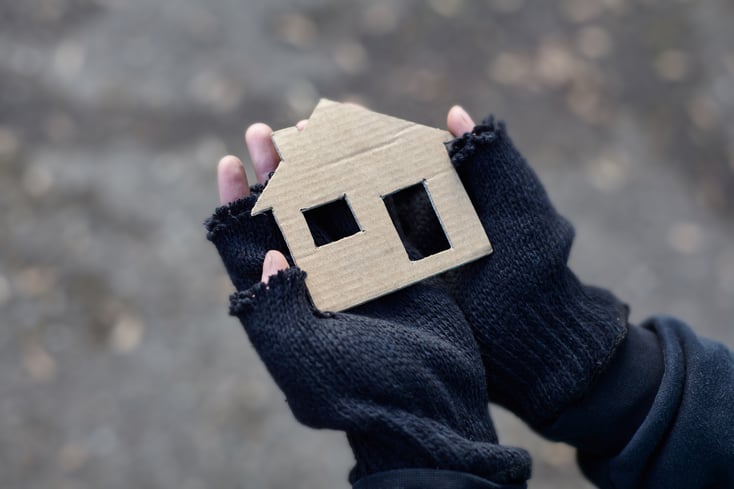 Young people do not live inside neat, isolated boxes. Their behaviors are molded by what happens at home, the peer circles they navigate, the school hallways they walk, and the neighborhoods they move through.
Young people do not live inside neat, isolated boxes. Their behaviors are molded by what happens at home, the peer circles they navigate, the school hallways they walk, and the neighborhoods they move through.
Posted by MST Services
 Young people do not live inside neat, isolated boxes. Their behaviors are molded by what happens at home, the peer circles they navigate, the school hallways they walk, and the neighborhoods they move through.
Young people do not live inside neat, isolated boxes. Their behaviors are molded by what happens at home, the peer circles they navigate, the school hallways they walk, and the neighborhoods they move through.
Topics: Multisystemic Therapy, MST Community, Troubled Youth, Evidence-Based Practices, evidence-based, Behavior Management, collaborating, Agencies & Admin
 Runaway behavior is too often dismissed as willful defiance. In reality, each runaway episode is more like a warning light. It's a symptom of deeper trauma, unmet needs, and systemic cracks that have gone unaddressed.
Runaway behavior is too often dismissed as willful defiance. In reality, each runaway episode is more like a warning light. It's a symptom of deeper trauma, unmet needs, and systemic cracks that have gone unaddressed.
Topics: Multisystemic Therapy, Troubled Youth, Evidence-Based Practices, evidence-based, Behavior Management, Families, Agencies & Admin, education, Juvenile Justice

Not every act of youth aggression comes from a place of cruelty. More often, it grows out of unaddressed pain: trauma at home, instability at school, or the weight of environments where violence feels unavoidable.
Yet traditional responses to bullying and youth violence usually stop at punishment. Suspensions, expulsions, and zero-tolerance policies may temporarily silence the behavior, but they rarely address the underlying issues and wounds that drive it.
Topics: Multisystemic Therapy, Troubled Youth, Evidence-Based Practices, evidence-based, Aggressive Behavior, Behavior Management, Agencies & Admin, School, education, Juvenile Justice
 According to the most recent data, chronic absenteeism reached a staggering 31% in the 2021–22 school year. This historic peak signaled a national crisis in student engagement and learning loss. While the following year brought a modest decline, nearly one in three students still missed 10% or more of the academic year. These attendance issues point to deeper challenges that impact student engagement and attendance.
According to the most recent data, chronic absenteeism reached a staggering 31% in the 2021–22 school year. This historic peak signaled a national crisis in student engagement and learning loss. While the following year brought a modest decline, nearly one in three students still missed 10% or more of the academic year. These attendance issues point to deeper challenges that impact student engagement and attendance.
Topics: Multisystemic Therapy, Troubled Youth, Evidence-Based Practices, evidence-based, Agencies & Admin, School, education, Juvenile Justice
Posted by MST Services

The financial burden of traditional juvenile justice responses like incarceration and residential placements is staggering, with costs often exceeding $100,000 per young person annually. Yet despite this investment, youth recidivism remains a persistent challenge.
Topics: Multisystemic Therapy, Troubled Youth, Evidence-Based Practices, evidence-based, Agencies & Admin, Juvenile Justice, Funding, Juvenile Probabtion

During the school year, Sabine Polak received a call from the guidance counselor regarding her 14-year-old daughter. In addition to being depressed, her daughter had contemplated suicide. Sabine brought her daughter to a crisis center to address her pressing mental health concerns and soon found out that her daughter's intense anxiety was caused by social media. The main reason for her stress was waiting for her friends to respond on Snapchat.
Topics: Multisystemic Therapy, Troubled Youth, Mental Health, COVID-19

Many of us have a love-hate relationship with technology. We have technology at the tip of our fingers; whether it is through a smartwatch, phone, tablet, laptop, desktop, or TV - screens are available everywhere. One survey explains that 95 percent of teens have access to a smartphone, and 45 percent are online almost constantly. While there are many advantages to tech, young brains are also subject to serious side effects.
Topics: Troubled Youth

Vaping, the new way to smoke, is becoming increasingly popular among teens. It may be hard to believe, but electronic cigarettes (e-cigarettes) were first introduced in 2007 and have since become a public health epidemic, contributing to youth substance abuse. The Surgeon General of the United States Public Health Service, VADM Jerome Adams, stated that “The recent surge in e-cigarette use among youth, which has been fueled by new types of e-cigarettes that have recently entered the market, is a cause for great concern. We must take action now to protect the health of our nation’s young people.”
Topics: Substance Abuse, Troubled Youth

On any given night in the United States, around 41,000 unaccompanied youth and young adults ages 12-25 experience homelessness, along with an estimated 4.2 million young people every year. Many factors lead to adolescents facing this growing issue.
Topics: Child Welfare, Troubled Youth, COVID-19
 Summer is here, and teenagers have a break from academic responsibilities—allowing them to have more time on their hands. During these months, the majority of adolescents have less structure and supervision and it is not a time to ignore the actions of youth illegal activity. While the overall juvenile arrest rates are decreasing, the number of teens who get in trouble with the law each summer remains high.
Summer is here, and teenagers have a break from academic responsibilities—allowing them to have more time on their hands. During these months, the majority of adolescents have less structure and supervision and it is not a time to ignore the actions of youth illegal activity. While the overall juvenile arrest rates are decreasing, the number of teens who get in trouble with the law each summer remains high.
Topics: Multisystemic Therapy, Troubled Youth, COVID-19
3500 Piedmont Rd NE
Suite 310
Atlanta, GA 30305